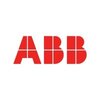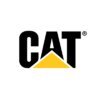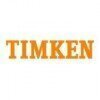


i
TÜV
SÜD
Work with us
![]()
Filter interviews by
TÜV SÜD Civil Site Engineer Interview Questions and Answers
TÜV SÜD Civil Site Engineer Interview Experiences
1 interview found
I appeared for an interview in Jun 2025, where I was asked the following questions.
- Q1. ,%of water absorption of bricks
- Ans.
Water absorption in bricks indicates their porosity and quality, typically ranging from 5% to 20%.
Bricks with lower water absorption (5-10%) are generally stronger and more durable.
High water absorption (15-20%) can indicate poor quality or excessive porosity.
For example, clay bricks usually absorb around 10-15% water.
Concrete bricks may have lower absorption rates, often below 5%.
- Q2. Maximum slump value for casting
- Ans.
The maximum slump value for casting typically ranges from 75 to 100 mm, depending on the application and mix design.
Slump test measures the workability of concrete.
A slump of 75-100 mm is ideal for structural elements.
Higher slump values (up to 150 mm) may be used for complex shapes.
Excessive slump (>150 mm) can lead to segregation of aggregates.
- Q3. Crossing strength of concrete
- Ans.
Crossing strength of concrete refers to its ability to withstand loads without failure, crucial for structural integrity.
Concrete's crossing strength is measured by its compressive strength, typically expressed in megapascals (MPa).
For example, a standard mix of concrete might have a compressive strength of 25 MPa, suitable for residential structures.
Factors affecting crossing strength include water-cement ratio, aggre...
- Q4. Sand and cement retio for brick masonry
- Ans.
The sand and cement ratio for brick masonry typically ranges from 1:4 to 1:6, depending on the strength required.
A common mix for brick masonry is 1 part cement to 5 parts sand (1:5) for general construction.
For stronger structures, a ratio of 1:4 may be used, especially in load-bearing walls.
In some cases, a 1:6 ratio is sufficient for non-load-bearing walls or decorative brickwork.
The choice of ratio also depends on ...
- Q5. Compressive strength of bricks
- Ans.
Compressive strength of bricks is a measure of their ability to withstand axial loads without failure.
Compressive strength is typically measured in megapascals (MPa).
Common bricks have a compressive strength ranging from 3.5 to 7.5 MPa.
Engineering bricks can have compressive strengths exceeding 20 MPa.
Testing involves applying load until failure, often using a universal testing machine.
Higher compressive strength indic...
- Q6. What is clear cover and effective cover
- Ans.
Clear cover is the distance from the surface of concrete to the reinforcement, while effective cover accounts for corrosion and other factors.
Clear cover is essential for protecting reinforcement from environmental factors.
Effective cover considers the actual depth of concrete after shrinkage and other factors.
For example, if the clear cover is specified as 25mm, the effective cover may be less due to concrete shrinkag...
- Q7. Sand cement aggregate retio for M20 gread concrete
- Ans.
M20 grade concrete typically uses a mix ratio of 1:1.5:3 for cement, sand, and aggregate respectively.
M20 concrete mix ratio: 1 part cement, 1.5 parts sand, 3 parts aggregate.
Total parts in M20 mix = 1 + 1.5 + 3 = 5.5.
For 1 cubic meter of M20 concrete, approximately 400 kg of cement, 600 kg of sand, and 1200 kg of aggregate are used.
Water-cement ratio is crucial; typically around 0.5 for M20 grade.
- Q8. Dimensions of modular brick
- Ans.
Modular bricks are standardized bricks used in construction, typically measuring 190mm x 90mm x 90mm.
Modular bricks are designed for easy handling and uniformity in construction.
Common dimensions include 190mm (length) x 90mm (width) x 90mm (height).
These dimensions allow for efficient stacking and alignment in walls.
Modular bricks can be used in various applications, such as residential and commercial buildings.
- Q9. What type of sand is used in plastering
- Ans.
Fine sand, typically river or manufactured sand, is used in plastering for a smooth finish and good adhesion.
Fine sand is preferred for plastering due to its small particle size.
River sand is commonly used as it is clean and free from impurities.
Manufactured sand can also be used, providing consistency in grading.
The sand should be well-graded to ensure a smooth application.
Avoid using coarse sand as it can lead to a r...
- Q10. No of bricks required for 1q m Wall
- Ans.
Calculating the number of bricks for a 1 square meter wall involves considering brick size and mortar thickness.
Standard brick size is typically 190mm x 90mm x 90mm.
Assuming mortar thickness of 10mm, the effective size becomes 200mm x 100mm.
Area of one brick with mortar = 0.2m x 0.1m = 0.02 sq.m.
Number of bricks per square meter = 1 sq.m. / 0.02 sq.m. = 50 bricks.
For a wall of 1 sq.m., approximately 50 bricks are neede...
Interview Preparation Tips
Top trending discussions






Interview questions from similar companies

I applied via Naukri.com and was interviewed before May 2020. There was 1 interview round.
Interview Questionnaire
1 Question
- Q1. Write the equation for dynamics and wave spectra equations. I do not remember questions as it is 3 years back.
Interview Preparation Tips

I applied via Recruitment Consultant and was interviewed in Mar 2020. There were 4 interview rounds.
Interview Questionnaire
1 Question
- Q1. Questions were related to the post John Deere were offering to candidates. For me it was Diagnostics Author position.
Interview Preparation Tips
If you don't know the answer don't try to attempt simply say that you don't know and assure interviewer that if you ll get a chance you will definitely answer that.
Be optimistic and attentive.

I applied via Walk-in and was interviewed before Apr 2021. There was 1 interview round.
(1 Question)
- Q1. Explain Compilation process steps?
- Ans.
Compilation process involves several steps to convert source code into executable code.
Preprocessing: Includes header file inclusion, macro expansion, and conditional compilation.
Compilation: Translates source code into assembly code.
Assembly: Converts assembly code into machine code.
Linking: Combines object files and libraries to create an executable file.
Loading: Loads the executable file into memory and prepares it ...
Interview Preparation Tips

Interview Questionnaire
1 Question
- Q1. Sfd and bmd. Good amount of strength of material was asked.

I applied via Referral and was interviewed before Jun 2020. There were 3 interview rounds.
Interview Questionnaire
1 Question
- Q1. Questions on Process,Simulation, CAD
Interview Preparation Tips

I applied via Recruitment Consultant and was interviewed in Jul 2021. There were 3 interview rounds.
Interview Questionnaire
1 Question
- Q1. CNC programming
Interview Preparation Tips

Senior Engineer Interview Questions & Answers
EMERSON PROCESS MANAGEMENTposted on 19 Oct 2023
(2 Questions)
- Q1. Why do you want to change the job?
- Q2. Where do you want to see yourself in next 5 years?
- Ans.
In five years, I envision myself as a lead engineer, driving innovative projects and mentoring junior engineers to foster growth.
Lead a team on a major project, such as developing a new software platform that improves user experience.
Mentor junior engineers, helping them to develop their skills and advance in their careers.
Contribute to open-source projects, enhancing my skills and giving back to the community.
Stay upd...

I applied via Walk-in and was interviewed before Aug 2023. There was 1 interview round.
(1 Question)
- Q1. Tell me about yourself
- Ans.
I am a Senior Engineer with 10+ years of experience in software development, specializing in backend systems and database management.
10+ years of experience in software development
Specialize in backend systems and database management
Strong problem-solving skills
Experience with various programming languages such as Java, Python, and SQL

I applied via Naukri.com and was interviewed in Apr 2023. There were 3 interview rounds.

(1 Question)
- Q1. Most interview question based on resume only. And related oil and gas industry.
(1 Question)
- Q1. Salary discussion
Interview Preparation Tips
- API 6A
- Subsea
- Pressure Handling
TÜV SÜD Interview FAQs
Tell us how to improve this page.
TÜV SÜD Interviews By Designations
- TÜV SÜD Inspection Engineer Interview Questions
- TÜV SÜD Lead Auditor Interview Questions
- TÜV SÜD Quality Inspector Interview Questions
- TÜV SÜD Project Engineer Interview Questions
- TÜV SÜD Assistant Manager Interview Questions
- TÜV SÜD Team Lead Interview Questions
- TÜV SÜD Analyst Interview Questions
- TÜV SÜD Manager Interview Questions
- Show more
Interview Questions for Popular Designations
Overall Interview Experience Rating
based on 1 interview experience
Difficulty level
Duration
Interview Questions from Similar Companies
TÜV SÜD Civil Site Engineer Reviews and Ratings
based on 7 reviews
Rating in categories
|
Inspection Engineer
235
salaries
| ₹3.6 L/yr - ₹8.4 L/yr |
|
Assistant Manager
105
salaries
| ₹6 L/yr - ₹12.1 L/yr |
|
Lead Auditor
92
salaries
| ₹5.4 L/yr - ₹15 L/yr |
|
Field Engineer
82
salaries
| ₹1.9 L/yr - ₹5 L/yr |
|
Senior Analyst
80
salaries
| ₹3 L/yr - ₹6.6 L/yr |

John Deere

Cummins

ABB

CNH ( Case New Holland)
- Home >
- Interviews >
- TÜV SÜD Interview Questions










